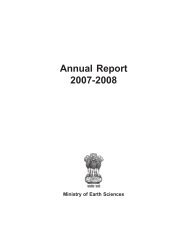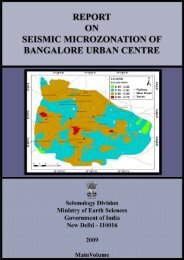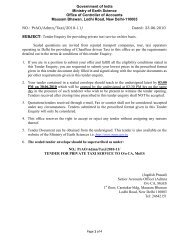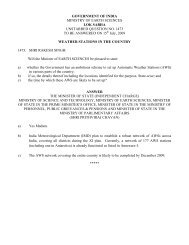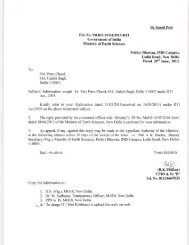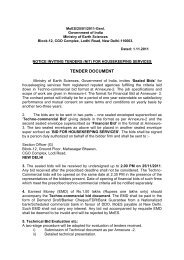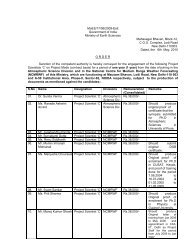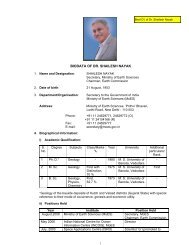Tsunami Report(Page 21-40)
Tsunami Report(Page 21-40)
Tsunami Report(Page 21-40)
Create successful ePaper yourself
Turn your PDF publications into a flip-book with our unique Google optimized e-Paper software.
(Courtesy: NRSA)FIG 26. Satellite imageries before and after <strong>Tsunami</strong> showing the extent ofopening to various inlets of Pichavaram area. (Source: NRSA)5.3.4 At NagapattinamNagapattinam, a coastal town, located about <strong>40</strong>0 km south of Chennai is the worstaffected place in India due to tsunami claiming more than 6000 death toll andextensive damage to the public and private property. It is believed that the dualwave effect (straight waves plus diffracted waves from Sri Lankan coast), gentleslope of continental shelf and gentle elevation of hinterland coupled with thepresence of Uppanar river and Vedaraniyam canal in the southern side triggered thedeadliest impact of tsunami waves. The preliminary observations revealed that theimpact on the southern part is deadliest than northern part due to the presence ofthese water bodies through which the successive progression of tsunami wavespushed the waters to distances beyond 2 km towards landside (Fig.27). However,the runup level in the northern part of Nagapattinam near Light House is close to 4m with a maximum inundation up to 755 m from the coast (Fig.28). Despitepresence of wide beach (~200 m), the gentle land topography facilitated landwardintrusion of seawater up to 800 m. Because of this, the high energetic waves crossedthe beach and flooded the human settlement. Severe damage has been noticed to<strong>21</strong>





